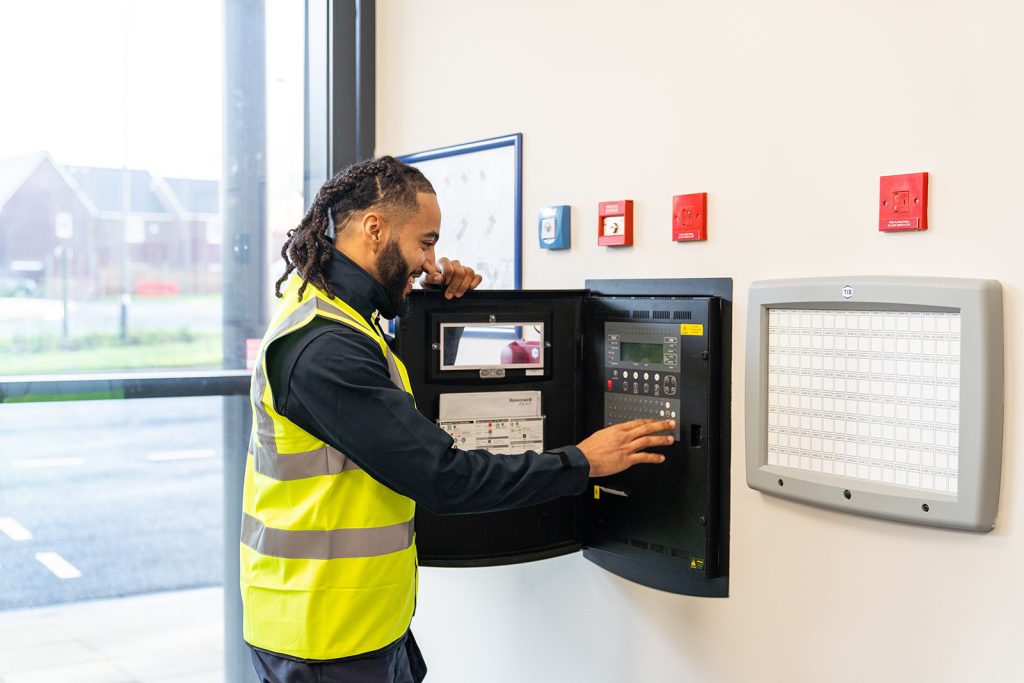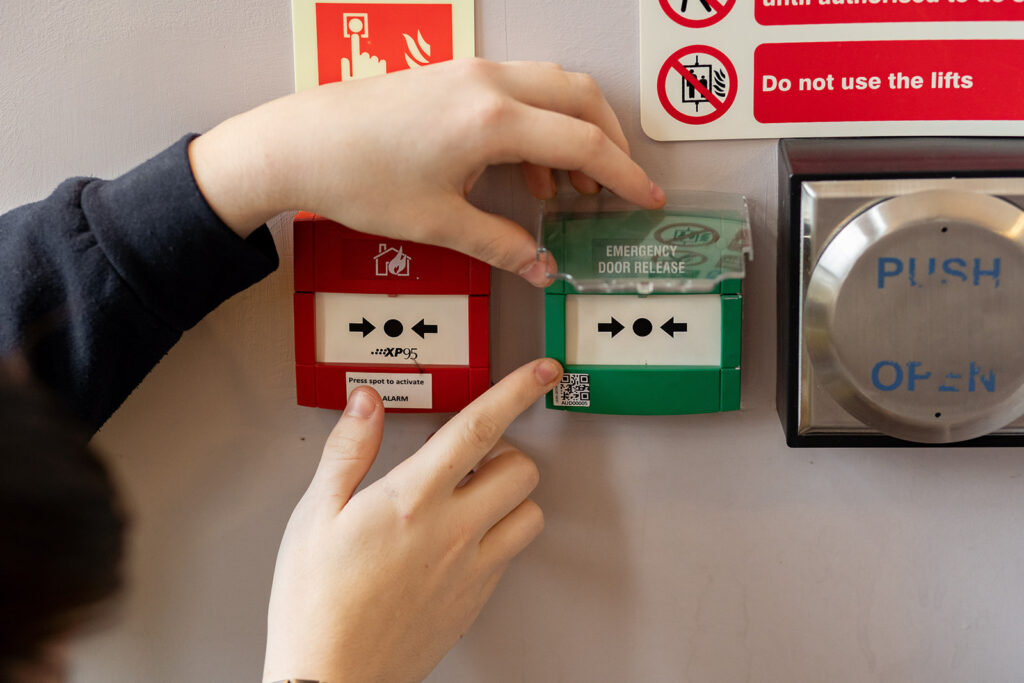Playing with fire? Integrated retirement communities and fire safety (non) compliance

Getting to grips with the rules and regulations governing fire safety compliance is always top of mind for our customers. However, many struggle to comprehend the exact ins and outs of compliance non-negotiables and, more importantly, the weight of their culpability in the eyes of the law if a fire, deadly or otherwise, were to break out on one of their sites. Non-compliance has the potential to result in significant financial and legal implications both for property owners and operational teams.
Important questions to ask yourself
- Am I 100% sure that each and every integrated retirement community within my charge is fire safety compliant?
- Am I 100% sure that a fully operational fire detection system and fire alarm is in place, with a full audit trail from a competent person regarding maintenance checks?
- Am I 100% sure that all escape routes are kept clear and fire escape doors are operational and clear from obstruction?
- Am I 100% sure every single one of our residents has been informed about the fire safety measures and fire evacuation strategy?
- Am I 100% sure that a suitable fire risk assessment has been completed and reviewed?
- Am I 100% sure that as the ‘Responsible Person’ or ‘Duty Holder’ for fire safety responsibilities, I’m not at risk of being fined or jailed?
If you answered “No”, “I’m not sure” or even just “I think so”, to any of the above, read on to understand the things you need to consider before it’s too late.

The Responsible Person
Firstly, it is important to understand the meaning of the term, ‘Responsible Person’.
Integrated retirement communities are residential premises so you are the Responsible Person if:
- you own the building (only in relation to the non-domestic parts)
- you have control over the premises
For the avoidance of doubt, that puts any company director or IRC general manager at risk should an enforcing authority, such as the Fire and Rescue Service (FRS), deem the premises to be non-compliant.
The Duty Holder
It’s not only the Responsible Person who has duties under the Regulatory Reform (Fire Safety) Order.
You may still be a Duty Holder with some responsibilities under the Fire Safety Order if you have some control within the premises. You are considered to have control of a premises if you are subject to a contract that makes you responsible for:
- the maintenance or repair of the premises themselves or anything in or on them
- the safety of the premises
Examples of Duty Holders may include but are not limited to:
- fire risk assessor
- fire alarm engineer
- managing agent
- duty manager
- facilities manager
Employees
While at work employees must take reasonable care for the safety of themselves and any other relevant persons who could be affected by their actions or omissions. They also have a duty to inform the responsible person of any situation that could present a serious or immediate danger to safety or shortfalls in any training.
The risks of non-compliance
Within an IRC operator, whether you’re a company director, GM or facilities manager, the implementation and management of a robust fire safety compliance strategy means there isn’t over reliance on potentially significant assumptions that others are not only aware of their duties and responsibilities, but are also competently fulfilling them too.
The Fire and Rescue Service (FRS) has the power to inspect IRC premises, checking compliance and looking for evidence that operators have carried out a suitable fire risk assessment and acted upon the findings of that assessment.
According to current fire safety legislation, strict legal action will be taken against businesses whose fire safety precautions are insufficient. Additionally, the Responsible Person(s) and Duty Holders also face personal liability if a fire were to result in injury or death without proof of having done proper fire safety compliance checks beforehand.

A checklist for Responsible Person and Duty Holder fire safety responsibilities
For integrated retirement community operators, fire safety compliance requires a good understanding of the current and future regulatory environment. While this seems straightforward, its execution is notoriously complex.
We’ve put together a checklist for you to consider, including actions that the Responsible Person must carry out under Articles 8 to 22, and 38 of the Regulatory Reform (Fire Safety) Order:
✅Article 8: Ensure that general fire precautions within the premises, as far as reasonably practicable, and the safety of employees and relevant persons, such as tenants and visitors, are always maintained.
✅Article 9: Ensure a suitable fire risk assessment is completed and reviewed.
✅Article 10: Ensure the principles of preventative measures is applied to all risks such as evaluating the risk, combatting the risk at source by maybe replacing a dangerous substance with a non-dangerous substance, provide instructions to employees etc.
✅Article 11: Provide fire safety arrangements appropriate to the size of the property and nature of its activities recording these arrangements if you employ 5 or more people, have a licence under enactment, such as alcohol licence or alterations notice in force.
✅Article 12: Eliminate or reduce risks, as far as reasonably practicable, from dangerous substances including the safe storage, transport, or disposal of any substances.
✅Article 13: Ensure that the premises have a suitable fire detection & alarm system in place and suitable firefighting equipment is present and readily accessible, to nominated trained individuals.
✅Article 14: Ensure emergency escape routes, and exits, are kept clear and free from obstructions to allow, in the event of danger, persons to evacuate as quickly as possible to a place of ultimate safety. These emergency routes must be indicated by signs and illuminated with emergency lighting.
✅Article 15: Ensure that procedures are in place, including safety drills, to implement safe evacuation from the premises. This also includes nominating enough competent persons to implement these procedures to ensure that all relevant persons can evacuate to a place of ultimate safety.
✅Article 16: Ensure that the safety of all relevant persons is maintained from any dangerous substances including details of any work utilising these substances, identification of the substances and specific hazards that could arise. Also, that non-essential persons and prevented from access to the area that is subject to the dangerous materials.
✅Article 17: Have a suitable maintenance regime in place undertaken by competent personnel (Duty Holders).
✅Article 18: Appoint one or more competent persons to assist the responsible person in undertaking the preventative and protective measures and ensure they have the relevant training, information, and time to fulfil their obligations.
✅Article 19: Provide comprehensible and relevant information on any risks identified, preventative and protective measures, procedures referred to in article 15, identities of nominated persons, details on any dangerous substances and any risks notified under article 22.
✅Article 20: Ensure that any relevant persons working in or on the premises is provided with comprehensive information relevant to them detailing the risks and preventative/protective measures in place and the identity of the responsible & competent person.
✅Article 21: Provide adequate fire safety training during working hours to all staff from the time they start employment. The training should be repeated periodically and where appropriate adapted to consider any new or changed risks.
✅Article 22: Where two or more responsible persons share or have duties under the RRO they need to co-operate with each other to enable compliance including sharing all relevant information on risks and dangerous substances.
✅Article 38: Ensure the maintenance of measures provided for the protection of fire fighters are subject to a suitable system of maintenance and kept in an efficient state, in working order and in good repair. This includes the premises and any facilities, equipment and devices provided in respect of the premises for use by the fire fighters or for their protection.
Fire safety compliance extends beyond duty of care
As an IRC operator, the number one priority is clearly duty of care for your residents. However, with a growing sector and an increasing percentage of the population soon expected to be over the age of 65, there’s a commercial imperative to have a robust fire safety compliance strategy in place. Residents and their families need reassurance that they are in a safe and secure place that takes fire safety measures seriously.
Can you really afford not to?
If you would like to talk to one of our fire experts, please contact us at info@tis.co.uk
Latest news
TIS appoints new Sales Director to drive growth
TIS, the life safety, security, and communications systems integrator, has appointed Tom Clarke as its new Sales Director.
Why real compliance isn’t a checkbox – it’s a board-level superpower
It’s time to change the conversation – from compliance as a constraint, to compliance as a strategic advantage.








